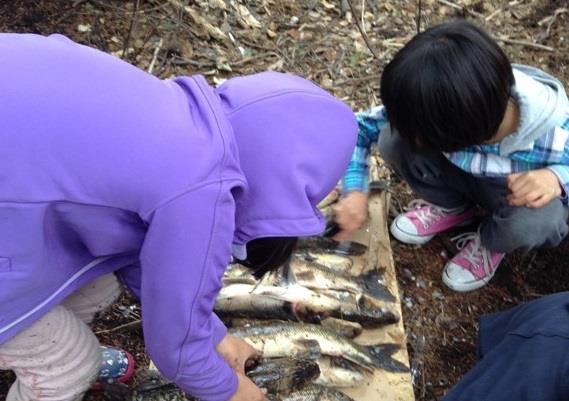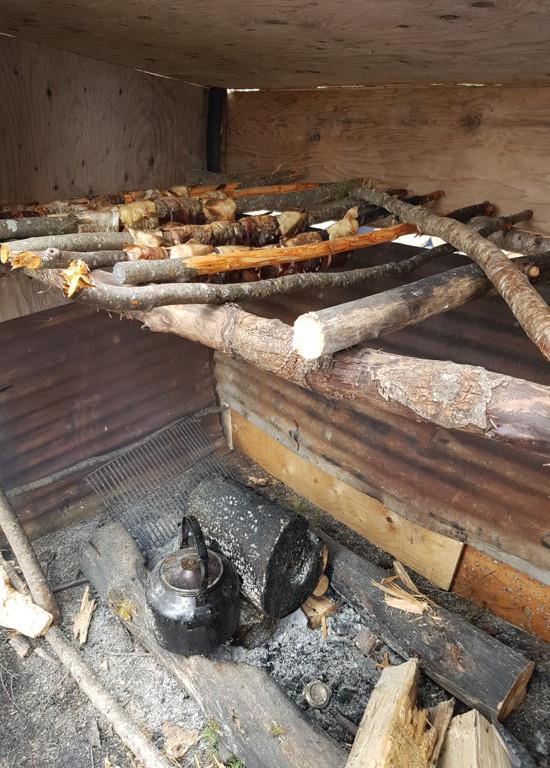Author:
Kathy Sky
(MENAFN- The Conversation) In a northern Ontario First Nation community, a council member who also drove the children's school bus volunteered to take three primary teachers and their students to a nearby river. They had heard that the suckers were running. It was May, the time of the sucker moon ; time for community members to harvest the fish.
Community Elders used traditional Indigenous teaching methods that involve telling stories and explaining while demonstrating, as well as encouraging children to participate. The Elders taught children that the land is a provider of food and resources. They explained that children must watch and listen carefully so they remember how things are done in a respectful way.
Through observing, listening and participating, the children learned how to catch the fish using nets, snares made from rabbit wire and sticks and using their bare hands. They learned safe ways of catching, scaling, getting water from the lake to clean the fish, filleting, creating a smoker, gathering wood and making a fire and then smoking the fish.
They learned respectful ways, such as not playing with the fire or splashing water when washing the fish. Every part of the fish was smoked and eaten (including the head and intestines), so there was no waste. The children learned an important traditional way of living, from watching the Elder make the snares to placing the fish on the smoker.

Children scaling the fish. (Kathy Sky), Author provided The next day, students, their teachers and community members took the bus to a nearby lake where there was a fire pit. An Elder cooked the fish over an open fire where the children had an opportunity to taste the fish they had caught.
The Elders used the community's Indigenous language, Oji-Cree, reinforcing words that the children were learning in their Indigenous language classes. In Oji-Cree, the word for river is Ziibii (pronounced zeebee). Namebin (pronounced naamaybin) is the word for suckers. Ishkode (pronounced ishkoday) is the word for fire. The Elders told the children (Abinoojiiyag, pronounced abinojeeug) that their community's traditional language is a connection to the land (Aki, pronounced ahki). It is the community's first language, a gift given by the Creator.
Return of the language
Throughout much of the 20th century, Indigenous children were forced to attend residential schools where they were only allowed to use English. Living away from their families during the school year, the children started to lose their language. Because of residential schools, generations of Indigenous children and adults do not speak their Indigenous languages fluently .
Read more: Ancestral languages are essential to Indigenous identities in Canada
The Elders, fluent speakers in the old language, some of whom are great-grandparents of children in school today in First Nation communities across Canada, are passing away. The next generation, such as Kathy (one of the authors of this article) is fluent, but has lost some of the words of the old language. Each generation knows less and less of the language because their parents have had fewer and fewer opportunities to learn and use the language at home with their families.

The smokehouse. (Kathy Sky), Author provided Because English was the language of their schooling, this generation tended not to use their Indigenous language at home with their children. As a result, parents of school-aged children may have learned their community's traditional practices growing up with their Elders, but very few are fluent in the language.
Parents, along with the chief and council and community members, see families, the community and the school as partners in revitalizing the community's traditional practices and language. Indigenous communities are now reclaiming their own traditional language and culture by incorporating Indigenous knowledge and ways of teaching into Eurocentric provincial curriculum .
Northern language, writing and play
Our Northern Oral Language and Writing through Play partnership research, funded by a Social Sciences and Humanities Research Council Partnership Grant, involves collaborative action research with Indigenous teachers, Elders and community members in northwestern Ontario in Treaty 3 , Treaty 5 and Treaty 9 areas, as they bring together Indigenous knowledge and the provincial curriculum.
In the northern Ontario First Nation community where children learned traditional ways of fishing and smoking fish, teachers drew on research on early literacy, inviting children to use writing to communicate and reinforce what the children wanted to share and remember about their cultural experiences . In this way, the teachers and students reinforced the importance of the children's language and cultural learning alongside literacy .
Teachers encouraged children to communicate ideas that are important to them. In the example below, it is clear that cleaning the fish, something that the Grade 1 writer was able to participate in, was enjoyable and a significant part of the experience for her.

A Grade 1 student's writing following the sucker fishing experience: 'I was clean[ing] the fish. I was taking off the scales.' (Kathy Sky), Author provided Teachers wanted children to think, and asked children to use what they knew about letters, words and sounds, rather than to copy words or only write the words they knew how to spell .
Figuring out how to spell unfamiliar words was a literacy learning process for the children. In the example, the child knew the spelling of some words. She sounded out words, such as clean, fire and fish, and then thought about letters that she could use to write the sounds. She wrote a letter for every sound that she heard and was able to spell words that were repeated, such as clean and fish, correctly the second time.
The children learned traditional practices by observing, listening to Elders and other community members speaking their community's Indigenous language and participating. They saw the connections between cultural learning and literacy by writing about what was important and enjoyable to them. In keeping with Indigenous knowledges that are about relationships and being in harmony and balance with the environment, parents, community members and teachers see the need for children to be literate in the English language order to participate in mainstream society, as well.
MENAFN1506202001990000ID1100329538
Legal Disclaimer:
MENAFN provides the information “as is” without warranty of any kind. We do not accept any responsibility or liability for the accuracy, content, images, videos, licenses, completeness, legality, or reliability of the information contained in this article. If you have any complaints or copyright issues related to this article, kindly contact the provider above.